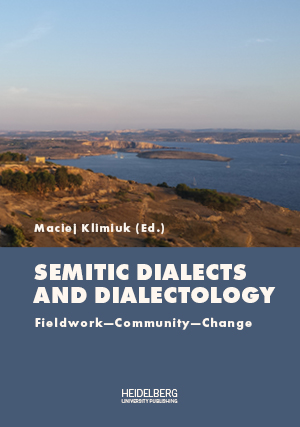Zitationsvorschlag
Lizenz (Kapitel)

Dieses Werk steht unter der Lizenz Creative Commons Namensnennung - Nicht-kommerziell - Weitergabe unter gleichen Bedingungen 4.0 International.
Identifier (Buch)
Veröffentlicht
Lexikalische Kreativität in den arabischen Dialekten: „blind“
The notion ʻblindʼ is commonly rendered into Arabic with aʕmā. Besides this omnipresent word, both in Classical and in the modern spoken Arabic, a number of other words are in use, such as kafīf, makfūf, ḍarīr, ḍaʕīf, ʕāgiz, maʕzūr, ṭasīs, etc., see the WAD I map 69. Many of these developed from a euphemistic paraphrase consisting of a general term for deficiencies and defects combined with a specifying noun telling in which respect these deficiencies occur. The original euphemistic expressions consist of two items, but this number is reduced by ellipsis to one item only. This semantic pathway has been described in Blank-LB (282ff.)
and Blank-LS (89, 105) and was termed lexical absorption. Another case is the word ṭasīs, which started as an expressive term reinforcing the meaning of aʕma, and the whole expression, too, underwent this lexical absorption, but in a different way. The present article tries to apply this concept of lexical absorption to
these words meaning ʻblindʼ in Arabic in some detail. Moreover, some loanwords are discussed briefly, as well as some cases of metonymic contiguity.
Keywords semantic paths, euphemism, lexical absorption, ellipsis, expressivity, metonymic contiguity, Arabic dialectology






